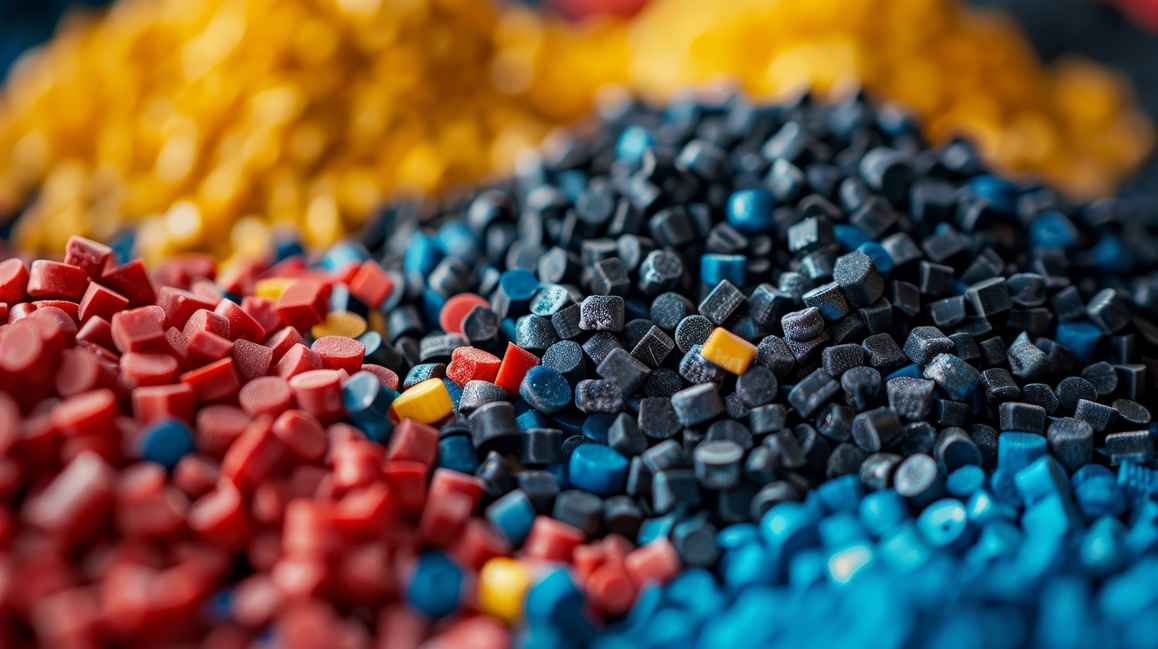The word ‘feedstocks’ is an interesting word in that it has so many applications. In husbandry, feedstocks are the base components used to make feed for animals. In composting, feedstocks are all the raw materials that go into a compost heap. The word is even used in the plastics industry to describe two different types of materials.
Feedstocks in the plastics industry can pertain to the raw materials needed to manufacture virgin plastic or those plastic materials manufacturers need to make new products. It is a subtle difference but one worth exploring when you consider the differences between post-consumer and post-industrial plastic recycling.
Raw Materials for Virgin Plastic
Plastic is basically a polymer. That means it is a substance manufactured by bonding molecules together to create long polymer chains. Building the chains requires a number of raw materials, most of which come from fossil fuels.
The majority of all plastics made around the world are made with materials that are actually byproducts of petroleum processing. In other words, what is left over after crude oil is turned into other products becomes the raw materials for plastic. Feedstocks for virgin plastic can also be derived from natural gas. The main component in all these feedstocks is carbon.
Recycled Materials as Feedstock
Although manufacturers rely mainly on virgin plastic to produce parts and complete products, there is room for including recycled plastic, especially in injection mold manufacturing. Recycled plastics are therefore referred to as feedstocks.
A manufacturer might purchase several thousand pounds of recycled industrial plastic from Tennessee-based Seraphim Plastics. As a feedstock, that material is combined with virgin plastic during the manufacturing process. The manufacturer can add so much recycled material without compromising the quality of the product being produced.
Why would a manufacturer purchase such feedstock? Depending on current market conditions, recycled industrial plastic (a.k.a., regrind) can actually be cheaper than virgin plastic. For many manufacturers, it is a bottom-line decision. However, some invest in recycled material in an effort to be more environmentally responsible.
As for companies like Seraphim Plastics, they purchase industrial scrap plastic from injection mold manufacturers, logistics providers, etc. They do not buy any post-consumer plastics. As a business-to-business (B2B) operation, they purchase scrap plastic from one company, process it, and sell it to another company.
Feedstocks for Bioplastics
In recent years we have seen an increasing interest in bioplastics. These are plastics made from natural materials in the hope that they prove to be more sustainable down the road. Interestingly, the actual definition of a bioplastic depends a lot on interpretation. There is no official definition at this point.
Some bioplastics are so called because they are made with renewable raw ingredients. Others are considered bioplastics because they are readily biodegradable. Still other bioplastics meet both definitions. Regardless, manufacturers need feedstock in order to make them.
It should be noted that not all bioplastics are biodegradable. This must be understood so that we do not confuse fantasy with reality. Transitioning entirely away from traditional plastics in favor of bioplastics will not necessarily solve what so many people refer to as the ‘plastic crisis’. Bioplastics are simply an alternative to more traditional plastic materials. They are not a solution to the alleged problem.
Better Recycling Is a Better Solution
Knowing what we know about feedstocks in the plastic industry, a better solution to the plastic crisis is better recycling. Whether you are talking traditional or bioplastics, better recycling generates feedstocks that reduce the need for virgin plastic. Cut down on virgin plastic and you address most of the issues that come with plastic waste.








